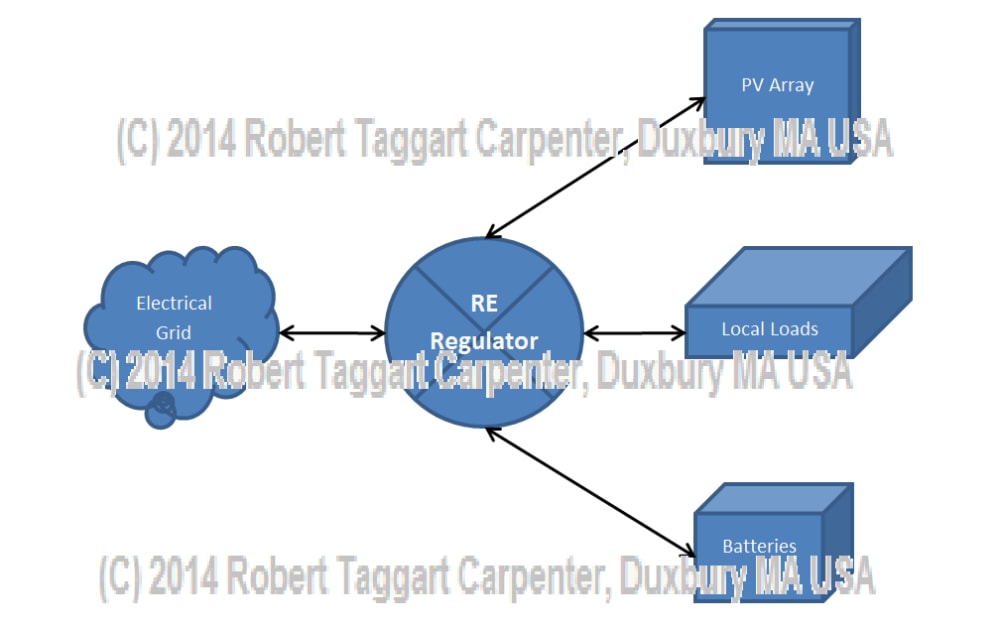Problem
Major utilities see Renewable Energy (RE) power sources such as small-scale wind and solar installations as a threat because the produced energy is not controlled.
Retail RE from solar panels (and other sources such as wind micro-turbines) is "dumped" on the grid in response to natural forces through relatively simplistic, non-inter-operating net metering infrastructure. These uncontrolled sources present operational risk and cause a loss of control over generating capacity and distribution. Current technologies avoid this problem by disconnecting RE sources from the grid when grid power is lost. The system is fragmented - by design.
The proposed commercial off-the-shelf RE Regulator electronic assembly is installed within a customer’s RE generation system. The RE Regulators gate the release of power into the grid through autonomous software operating in a coordinated, distributed operation. The RE Regulator is designed to inter-operate with the existing power grid control infrastructure to enable central coordination.
Theory of Operation
In operation, each installed RE Regulator (household or business) connects to peer RE Regulators in the local area through Internet protocols. The IP connection is made via either existing fixed or wireless connections, or a point-to-point radio mesh in cases where no existing Internet connection is available, and for fail-safe operation during storms or grid power failures.
The software in the connected RE Regulators manages the relationship between the grid operator and the RE generation equipment to maintain positive control over the power distribution system. Further, connected units coordinate a three-way energy flow in real time amongst on-site generation, on-site storage and loads, and the grid.
Value Proposition
The benefit to producing consumers is that the RE Regulator optimizes return on RE investment by possibly storing excess power when prices are low, and releasing power when prices are high.
In economic terms, a cohort of nearby RE Regulators can be configured by their respective owners to act as a coherent set. Such a cohort will appear to the local operator as one operational power plant with multiple connections to the grid. Each cohort thus forms a bargaining unit, which establishes a more balanced, healthy relationship between the producing consumers and the grid operator. At scale, the owners of each RE Regulator co-operating network could essentially incorporate and act as a regulated power producing entity.
The benefits to power grid operators are that the distributed network of regulators acts as a single plant. The RE regulator network is engineered to honor established protocols for distributed operation control and grid balancing. Even as RE deployment grows organically and without centralized oversight, RE Regulators bind the producing consumer’s infrastructure into a coherent and controlled power source which reinforces the strengths of the distributed power system and mitigates risks through in-built safety limits.
Like this entry?
-
About the Entrant
- Name:R Taggart Carpenter
- Type of entry:individual
- Software used for this entry:not yet
- Patent status:none





